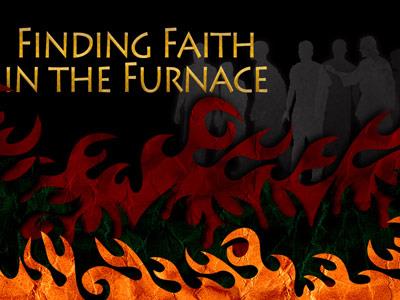-
The Last Message Of Daniel Series
Contributed by Bob Faulkner on May 31, 2015 (message contributor)
Summary: For the unsaved, Daniel means controversy. For those who know Jesus and love His revelation, Daniel means excitement, the thrill of knowing the future and our part in it. Part one: the man Daniel, an overview of his book., and an answer to some charges.
THE LAST MESSAGE of DANIEL
OPENING COMMENTS
Many have discovered and written of the following matters. I have even delved into Daniel a couple of times myself, and recorded those delvings. Often I have felt a bit of the awe and even the frustration which Daniel experienced . What does this mean? I have cried out. Per- haps you have too. More importantly, What does this mean for me and my people in these lat- ter days? The answers have come, measured, but real. The book grows in its wonder.
And as I meditated on these things once more in the winter of 2002, a fire was lit again. I was compelled to go deeper, to see further. It is my growing conviction that the days Daniel saw are upon us, and that the words that were once “closed up” and “sealed” (12:9) are daily being unlocked.
I use as my core of thought the final three chapters of Daniel’s work. Though three di- visions (chapters 10, 11, 12), the unit is one. There is a lengthy introduction and preparation, (chapter 10) followed by startlingly accurate predictions of the world’s history. No less than an angel of God gives the bulk of this narrative and closes it with personal words for Daniel. And a Man looking very much like the Son of God Who appeared to John the Revelator, makes an astounding appearance.
As I strive to expose the meanings of the predictions, it will be necessary to bring in other portions of Daniel from time to time, since the book is clearly a unity . And the same Spirit who spoke this end-time message to Daniel spoke similar realities to Paul and John . Their words, and those of Christ Himself also will be drawn into the telling of this mystery.
I. DANIEL: OVERVIEW
A. The Man
Daniel was one of many Israelites taken into captivity in the first wave of prisoners that went to Babylon, 605 BC, the result of God’s utter frustration with His disobedient people. He became an official in the court of King Nebuchadnezzar through the process described at the beginning of the book of Daniel, and he continued to serve later rulers until the first years of Cyrus of Persia. He is not called a prophet in the book, but Jesus called him one and that should settle it. One who prophesies is at that moment a prophet. Joseph, David, and even Job wear the mantle during their lives. Daniel is certainly in this group.
B. The Book
What is its theme? Perhaps the best summary is found in chapter 4, spoken through the pagan king Nebuchadnezzar in verse 17 “…..the Most High rules in the kingdom of men, gives it to whomever He will, and sets over it the lowest of men.” This sentiment is repeated in 25,26, 32 and 34. Daniel echoes it, or actually sets the tone himself, in 2:28, “But there is a God in Heaven Who reveals secrets…” The God who rules in this book, rules Daniel, his friends, the several monarchs who come and go, and yes, the one who is still to come. May we remember this precious truth as times worsen. God rules and overrules.
The book can be divided simply into two parts. Chapters 1-6, history, and 7-12 prophecy. But that doesn’t tell the whole story. There is prophecy all the way through. Let’s look at the book in chronological order, and assign dates to each chapter:
Chapter one occurs in 606 BC, 20 years before the final fall of Jerusalem at Nebuchadnezzar’s hands. Daniel is 16, just one of many captives. He and his godly friends are raised to prominence by Providence.
Chapter two records the real breakthrough in Daniel’s career as a man of God. The year is 603 BC, Daniel is 19, perhaps. Here is the famous statue prophecy, where Daniel sees the coming consecutive kingdoms to follow Babylon and lead to the very end of history. We are living today near the very end of that “statue”, in the Roman era.
Chapter three tells the exciting story of Nebuchadnezzar vs. the three friends of Daniel, and the fiery furnace. Now it is 586 BC, and while the fire that burns in Jerusalem de- stroys those who refuse to come to Babylon, the fire burning in Babylon’s “fiery furnace” de- stroys only Babylonians. Daniel is now 36.
Chapter four is the last concerning Nebuchadnezzar. It tells of another dream of his, about himself. Daniel interprets and it comes to pass. For the third time, Nebuchadnezzar is brought to his knees before the living God.
Chapter seven is actually next in order, happening in the early days of Belshazzar’s co- regency with his father Nabonidus. This is the vision of the four animals, corresponding to the statue prophecy of chapter two, but in an image to give it more flexibility in interpretation. Again we see that we are living in the last days generally, with the last of those last days close upon us, or so it seems. Daniel is an older man now, upper 70’s or early 80’s.

 Sermon Central
Sermon Central



